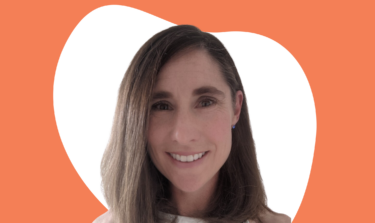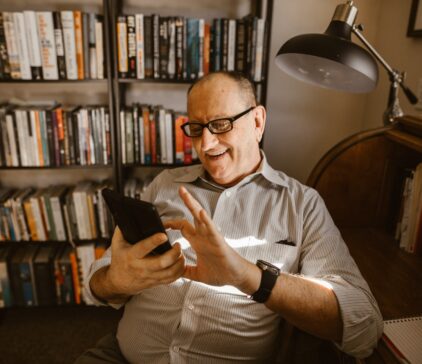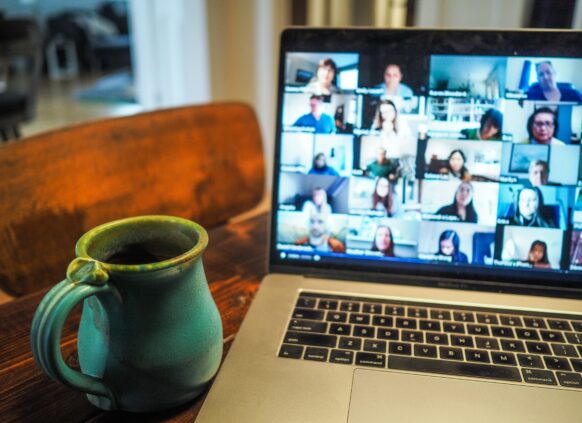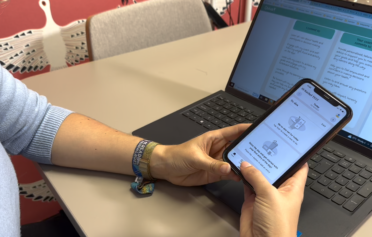
My journey into the world of digital health
In this blog, Keren Miller shares her experiences transitioning from her role as an NHS Dietitian to Clinical Lead at Oviva, shedding light on how she approaches patient care in the digital age while candidly exploring the drawbacks of working remotely. Discover the transformation that has led her to embrace innovation and navigate the unique complexities of a rapidly evolving healthcare landscape.
All the recent news coverage on NHS waiting lists, especially as we continue to recover from the Covid pandemic has really given me cause to reflect on my career in Dietetics, both in the NHS and now in a fast-paced, innovative, digitally-enabled healthcare environment.
I empathise with my colleagues in the NHS and remember my 17 years (the majority in Diabetes) of NHS experience with fondness, but also frustration.
Frustration that I could not offer the care that patients really deserved. Frustration that I was measured on how many patients were waiting rather than the service I was offering, or the outcomes I was achieving. Frustration that I had to reduce the waiting lists even if that meant not seeing someone whose treatment I had started.
What was life like working as a dietitian in the NHS?
Despite my best efforts to create extra clinics and extend my clinic session by a few more appointments, I encountered barriers. Finding an available room was always a challenge and finding patients available in those 9-5 clinic times is yet another!
I remember having full clinics, sometimes overbooked, yet finding big gaps in my day because patients didn’t attend. Either they had been waiting such a long time for their appointment that they had forgotten or made alternative plans. Or the problem had changed (resolved or worsened) meaning that this appointment was no longer relevant.

Perhaps they were dissatisfied by the length of wait, perhaps they got caught in traffic, couldn’t find a parking spot or afford the parking? Perhaps they couldn’t get time off work to attend the traditional 9-5 clinic slot? Perhaps they had a hypo on the way to the clinic and couldn’t safely attend?
So many potential barriers that this traditional model created. I so badly wanted to help people. I had so much knowledge and skill to share, but couldn’t reach enough people.
It was this exact passion and frustration that led me to look for an alternative way to offer care.
What did you learn when you first joined Oviva?
I joined the innovative space of digitally-enabled diabetes care just over 4 years ago, before Covid changed our world and our understanding and acceptance of the digital space within healthcare.
I quickly learnt so much about how patients can use digital tools to drive changes to their behaviour.
The act of logging and self-tracking is powerful. This alone can help keep someone focused and reflective about their choices. Being able to take photos of meals and track as they go about their day, rather than after the event, can really help with supporting frequent changes through the day.
Using an app to record daily habits allows users to be very honest. No recall is required but not sitting face-to-face with a clinician may also be a factor in the transparency. The digital tool allows not just the tracking of meals but other factors around the meal too, for example, mood, satiety levels but also activity or clinical measurements such as blood glucose readings.
Of course this could all be tracked in a hand held diary but being able to log all this within the same time stamp can help to link behaviours to outcomes or indeed outcomes back to behaviours. Interestingly, it is not only the young who love to use and communicate via an app

How can digital tools support patients in managing their health?
This new platform for providing care and education allows for a high frequency of contact with the person requiring just that.
It allows me as the coach to offer advice that is completely relevant at the time that the person needs it. I can offer information in small manageable chunks, and it’s easy to share additional resources that may deepen and support the learning.
The educational platform (Oviva Learn) that accompanies the app frees my time up to help the patient to problem solve, overcome barriers and to set goals. The high frequency of contact means I can identify barriers as they happen, which makes it far easier to overcome them and explore other options.
I can use their data to highlight how their behaviour changes outcomes, far better than a textbook or a diet sheet!
It’s also really easy to re-engage if motivation drops, and this is done as soon as a reduction in engagement is noted rather than a missed clinic appointment!
Scheduling follow up is easy and the ease with which care is delivered means I can see, empower, support and educate so many more people in a day, a week, a month! There is far less admin burden as notes made within the app during any coaching support are a record of the interaction. This frees up genuine time to be able to ‘see’ more patients.

Coaching doesn’t have to happen in real-time, which means I can review my patients’ activities and coach them at a time convenient to me, which is great for fitting in with my other work and non-work commitments. My patient can review, read and re-read our interactions at a time that is right for them. This may be out of hours, before or after unusual shift times, or when it’s finally quiet and the kids are in bed. This means my patient is in a place to take on board the support and they can come back to it whenever they wish.
I find people who wouldn’t usually access this type of care-lifestyle intervention and behaviour change, are far more likely to access it via this platform. Being more accessible and offering care to those who don’t usually access lifestyle interventions remains high on the agenda.
What’s the impact on clinicians?
The nature of the work is very goal focused and very practical. Using the app as a platform really encourages me as a coach to turn the concepts explored with a patient into an action that they can go away and implement, something they can then track on the app and measure! This coupled with the high frequency of check-ins and the additional learning materials results in clinical outcomes that I could never achieve in my traditional clinical role.
Using the app as a platform to support this kind of care means there is no need to book clinic rooms and no need for traditional appointments times. There are fewer cancellations and it’s easy to keep patients engaged and moving through the service.
It is also easier to match a patient with a coach that is culturally more appropriate as their coach doesn’t have to live near them.
This results in reduced waiting lists. A reduced waiting list means that patients can be seen soon after the point of referral when they most need and want the intervention. Working with patients at this point in their journey towards better health is a far better patient and coach experience!

Are there any challenges?
Always!
For the first time ever there is so much patient data to work through. Logs include mood, bowel movements, activity, food, fluid, satiety levels and measurements including weight, blood pressure and blood glucose. It can be overwhelming and hard to know what to do with all this data.
However, using the technology to help filter and isolate important trends has really helped me streamline how I use all the information that the patient provides me with.
Like for everyone who works remotely, learning to walk away and ensure that I stick to my agreed working hours has been an important lesson. It is so easy to log back on just to check in on a patient, so it can be tricky to switch off.
Similarly, learning to communicate via the app in a way that is informal, engaging yet informative, motivating and professional can take some time. There can be double meaning behind so many well-intended, but badly constructed, sentences.
Is this the future of healthcare?
The nature of the platform and the volume of entries that is logged creates an amazing window into behaviours and trends. It allows us to start to correlate certain actions, behaviours or characteristics with outcomes.
Analysis of these trends helps us to understand when patients need the most support and which patients need the most support. This allows companies like Oviva to build programmes that are right for the individual, not based on what is considered standard practice but on actual data. This in turn helps us to be able to scale and increase our capacity to see even more patients without impacting on outcomes.


